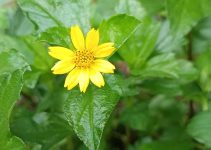Lovage
Levisticum officinale
A relative of celery, lovage is a hardy perennial herb whose leaves can be used in soups, salads, and bouquets. Unlike most herbs, lovage thrives in clay soil that is slow to drain. Lovage is a large plant, reaching up to 5 feet tall, so grow it at the back of the border where it can spread and not compete with other plants. Its small yellow-green flowers attract beneficial insects. After planting, lovage grows vigorously for about four years and then slows. Because lovage is a self-seeder, clip off flower heads before they mature unless you want more plants.
Type: Herb, Perennial
Height: 3 to 8 feet
Width: 2-3 feet wide
Flower color: Yellow
Seasonal features: Summer bloom
Special features: Cut flowers
Zones: 3-9
How to Grow Lovage
Lovage looks a bit like celery but is in the carrot family. The plants may grow up to 6 feet and bears lacy thick green foliage. The flowers are yellow and held in umbrella-shaped umbels. They grow 36 to 72 inches with a 32-inch spread. The base of the plant is comprised of thick celery-like stems with glossy green leaves that decrease in number as you move up the stalk. The yellow flowers are arranged in umbel-type clusters, which produce seeds 1/2 inch long.
Determining when to plant lovage is the first step in growing the herb. Direct sow lovage seed indoors five to six weeks before the date of the last frost. Sow seed on the surface of soil and dust with sand. The seeds may also be sown outside in late spring when soil temperatures have warmed to 60 degrees F. (16 C.).Sun and well-drained soils are the key to growing lovage. Growing lovage requires soil with a pH of 6.5 and sandy, loamy soils. Lovage plants are hardy to USDA plant hardiness zone 4.
Seedlings require consistent moisture until they are several inches tall and then irrigation may diminish. Transplant lovage plants 8 inches apart in rows 18 inches away from each other. Lovage will bloom earlier when planted indoors. You can expect flowers on transplanted plants in early summer that last until late summer.
Leaf miners seem to be the primary pest of the plant and will damage the leaves with their feeding activity.
Harvest lovage leaves at any time and dig out the root in autumn. Seeds will arrive late in summer or early spring and the stems are best when eaten young.
Lovage has a reputation as a good companion plant for potatoes and other tubers and root crops. Food crops should be arranged in the vegetable garden to form the best alliances and make their growth better and healthier.

